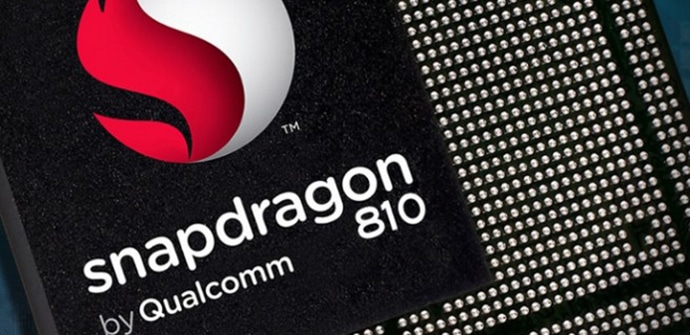
After the launch of terminals like the Galaxy Note 4 or the Nexus 6 with the Snapdragon 805 processor, it was clear that Qualcomm's next step for 2015 was the new Snapdragon 810. The last weeks of 2014, however, were quite murky, and it was rumored that the American company was having problems with the chip, even going so far as to be spotted the possibility that some of the flagships of the main manufacturers delayed their launch. After announcing the LG G Flex 2 and Xiaomi Mi Note With Snapdragon 810, these doubts seem to be cleared, although not all.
According to Digitimes Research, the Snapdragon 810 has already entered mass production, with the aim of meeting the demand for the aforementioned smartphones from LG and Xiaomi. Despite the talk that this moment would not arrive until the second quarter of 2015, Qualcomm would have managed to arrive on time. Them they had denied these problems, although apparently, there are certain aspects that do not work quite well, insufficient for many firms not to bet again on a solution that has proven its reliability in recent years.

LG G Flex 2 and Xiaomi Mi Note are the first to test both the new chip and Qualcomm's ability to cope with their orders. Both are expected before the end of January, but although LG's curved smartphone will not need too many units, it will be the Chinese brand that compensates with a high demand.
Competition with Samsung Exynos
El Qualcomm Snapdragon 810 will bring many new features with respect to the previous models. In fact, it is the first to adopt the Big.Little architecture, with two groups of four cores that do not work simultaneously, but four are used for lighter tasks and others for those that require more power. As Digitimes explains, they have been slow to take the step due to the fear of competing against Samsung. The 64-bit chips With this architecture the South Koreans are already in their second generation, so their experience is much greater, so much so that they plan to change the 20nm manufacturing process to 14nm this year.
With this move, Qualcomm enters to compete in visiting territory, since the work time accumulated by Samsung gives them a certain advantage when it comes to integrating correctly optimized hardware and software. If we add to this the problems that have appeared, we are left with a somewhat worrying panorama. Connectivity plays in your favor LTE Cat.9 (they have been the first to integrate it) and the manufacturers confidence and users